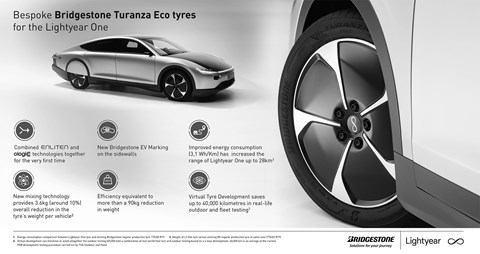► What sort of tyres do EVs need?
► We research the best electric car tyres
► From rolling resistance to durability
Mushrooming demand for electric vehicles (EVs) means that more and more Brits are plugging in - but how many motorists have considered if their electric car needs a different type of tyre? You can legally put any tyres that fit on an EV, but an increasing volume of car brands are tailoring their rubber to meet the different needs of plug-in vehicles.
EVs are heavier than their petrol or diesel equivalent, putting extra wear on tyres, and efficiency is more important than ever, as every kilowatt hour is needed to extend the driving range on one charge.
Tyre manufacturers are presented with new challenges as they try to satisfy myriad requirements and in this article experts in the field explain how they are developing the best tyres for electric cars.
What are EVs really like to live with? Our panel of owners reveal all
How are EV tyres different to normal tyres?
Tyres for battery electric vehicles face the usual hurdles as normal items (cost, durability, wet-weather handling, noise and so on), but some parameters are trickier to meet than others. Challenges unique for EVs include:
- Aerodynamics Range is paramount on EVs, so aero drag must be kept low to cleave the air cleanly
- Size Thin, tall tyre sizes (called ‘olgoic’ dimensions) are common to reduce the frontal area (witness the BMW i3’s narrow tyres)
- Rolling resistance The energy required to keep the tyre rolling must be super-low; EV tyres reduce the ‘hysteresis’, or energy loss through clever low-drag materials
- Durability EVs are heavy and cornering forces higher; the tyres must withstand this extra wear
- Noise, vibration, harshness (NVH) Because EVs are so quiet anyway, refinement takes on extra importance

To meet these extra demands, most tyre manufacturers are creating bespoke tyres specifically designed for electric vehicles. Tyres to look out for include the Continental Conti.eContact, Michelin Pilot Sport EV and Pirelli P Zero Elect to name three specific models. Bridgestone plans to start marking its Turanza Eco tyres with a special plug-in EV symbol to distinguish the variant aimed at plug-in vehicles (see above).
FAQ: electric car tyres expert reveals all
We interviewed Emilio Tiberio, COO & CTO of Bridgestone EMIA, who explained how his company made EV tyres last longer and perform better. The company published a survey suggesting that half of European drivers are considering buying an electric vehicle but that 37% are ‘still sceptical about doing so due to concerns around efficiency and limited range.’
Bridgestone recently showcased a hyper-efficient EV tyre for the new Lightyear One solar-powered electric car (below). We caught up with Tiberio to find out how this concept tyre would influence more common EV tyres.

How did you develop the tyres for the Lightyear One?
‘We brought together two different technology packages for the first time: we used what we call ‘Ologic’ technology - tyres that are narrow but tall to reduce the aerodynamic drag. These 19in tyres with very high diameter have better rolling resistance and this means better battery efficiency.’
Why is weight important for EV tyres?
‘We also use our Enliten technology. We use this when we build very light tyres. It’s good for sustainability and we use fewer resources to make them. On the Lightyear One, it means we could reduce the weight of all four tyres by 3.6kg, which increases the range by 28km [17 miles] on one charge. This is significant.’
How do customers know a tyre is produced specially for electric cars?
‘This is the first time we’ve introduced an EV marking on the sidewall to say that this tyre has been designed for EVs. This will go on OE [original equipment] tyres.’

Super-skinny tyres can mean less grip though. How can you keep the handling safe if you use a narrow tyre for aerodynamics, like on the BMW i3 (above)?
‘The contact patch is going to be smaller and we don’t want a trade-off in grip. So we have a different pattern design, a different compound, different materials in the carcass to balance the stiffness of the carcass with the stiffness of the tread pattern. We had to re-engineer everything from scratch using the latest innovations in material science. We believe we can deliver a similar performance level with standard tyres of a bigger contact patch.’
EVs are heavy. Do they wear tyres out more quickly?
‘Electric cars are heavier, yes… But the durability is the same as on a conventional tyre in our tests. Customers have the same expectation as if they were driving a normal tyre and our EV tyres pass the 40,000km test.’
Don’t all cars need greater fuel efficiency and less rolling resistance? Aren’t the needs of conventional tyres and EV tyres converging?
‘We will keep two lines in the market in the future.’
Further electric car reading
Our guide to the best EVs on sale today
How much does it cost to charge an electric car?
The best long-range electric cars